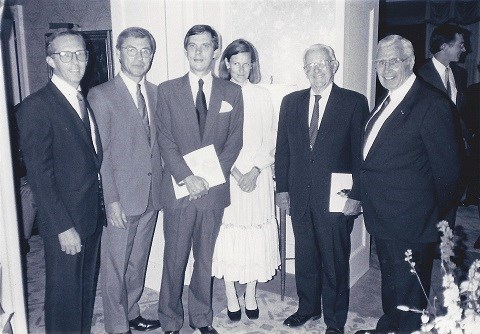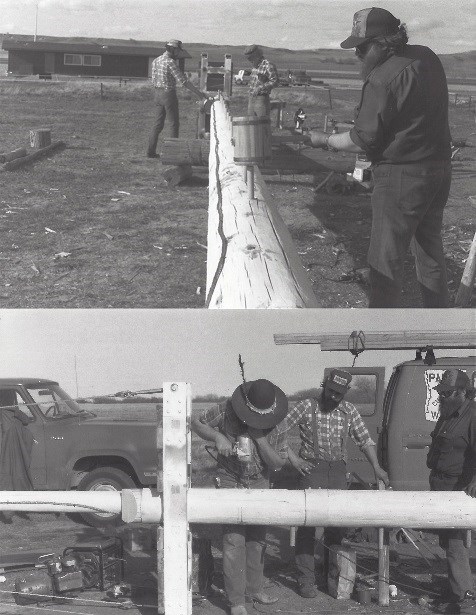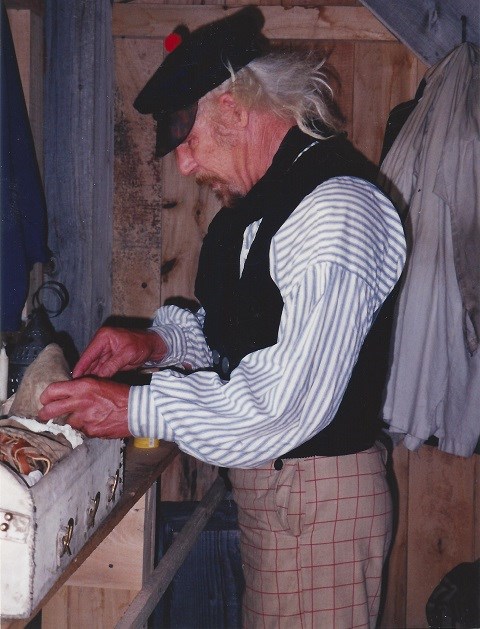Local Support Drives Reconstruction
NPS photo Innis’ consistent and impassioned advocacy, including constant publicity and letter-writing campaigns, helped Senator Mark Andrews in 1978 win congressional approval for reconstruction over NPS opposition. Another seven years passed before Congress in 1985, again at Senator Andrews’ urging, allocated the long-desired reconstruction funds. In the meantime, in the 1980s, Innis and other Mondak-area boosters successfully resisted local and state support for yet one more transportation-related threat to Fort Union: construction of a Missouri River-spanning highway bridge in the vicinity of the historic site. 
NPS photo What made that possible? “Well, the major thing is to sustain the local interest,” Senator Andrews told Collin after the reconstruction had commenced. “It’s because of that local interest, we were able to get Fort Union considered over some 450 sites around the nation. And it’s that local interest, that local push, the enthusiasm by people who know the [Missouri and Yellowstone Rivers confluence] area best that’s going to keep it moving.” 
NPS photo/Carla Kelly |
Last updated: April 24, 2021
